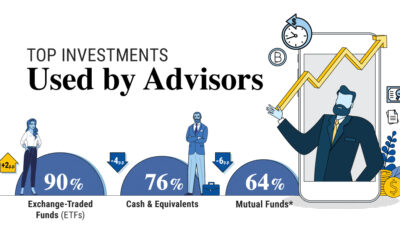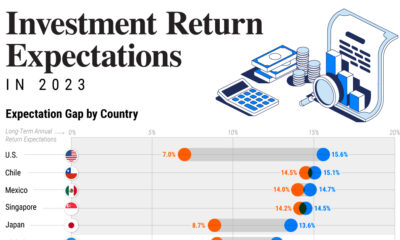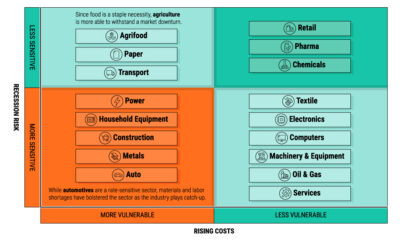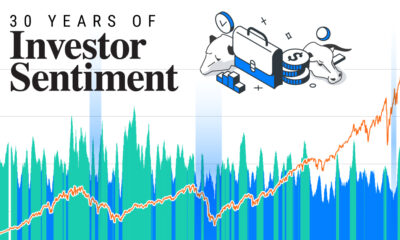This infographic is available as a poster.
Chart: Money Supply and Inflation Over 150 Years
How closely are money supply and inflation related?
This Markets in a Minute from New York Life Investments shows the trajectory of money supply and inflation, taking a historical look at their relationship since the Industrial Revolution.
Defining Money Supply and Inflation
To start, here is a brief overview of money supply and inflation:
- Broad money supply: measures the amount of money circulating in the U.S. financial system, including assets that can be converted into cash.
- Inflation: measured by the consumer price index (CPI), inflation is the average level of prices in the U.S. based on a basket of goods and services over a given time period.
When more capital is injected into the economy, it can cause consumer demand to grow. Assuming a similar amount of goods and services available, consumers are willing to pay more–which leads to rising prices.
Money Supply and Inflation Over History
Here are the key periods where money supply per capita was the highest in recent history.
Five-year rolling periods were used to eliminate the noise found in one-year periods. As a result, this shows consistent periods of monetary growth, and explains why the recent inflation spike isn’t as pronounced.
As seen in the table below, there were five periods where broad money per capita growth exceeded 50%.
| Time Period | Peak 5-Year Broad Money Per Capita Growth* | 5-Year CPI Growth |
| 1902 (Industrial Revolution) | 50% | 0% |
| 1920 (post-WWI) | 76% | 100% |
| 1945 (WWII) | 105% | 36% |
| 1979 (Great Inflation) | 54% | 45% |
| 2021 (COVID-19) | 56% | 13% |
*Rolling 5-year cumulative growth
Source: Lyn Alden, macrohistory.net, St. Louis Fed, Òscar Jordà, Moritz Schularick, and Alan M. Taylor. 2017. “Macrofinancial History and the New Business Cycle Facts.” in NBER Macroeconomics Annual 2016, volume 31, edited by Martin Eichenbaum and Jonathan A. Parker. Chicago: University of Chicago Press. (Mar 2022)
During WWII, the money supply doubled to finance war efforts. Inflation was high during and after this time, particularly in 1946-47, but returned to stability in 1949.
Amid soaring government deficits in the 1970s, inflation climbed upwards. In response the U.S. abandoned the monetary system established in WWII, decoupling from the gold standard, adopting the one we use today.
Today, while money supply per capita has grown 56%, inflation has increased, albeit at a muted rate compared to other periods. In addition, it’s been just two years since the money supply grew at such rapid rates. How inflation will play out in the future remains to be seen.
Two Historical Exceptions
There are two exceptions where inflation didn’t rise as sharply when the money supply increased.
Between 1875 and 1910, the U.S. emerged as a superpower. During this time, several technological innovations took place including the lightbulb, electrification, and the internal combustion engine. With the Spindletop oilfield advancements in 1901, more oil was produced there in one day than in all global oil fields combined.
As a result, this created real growth and vast improvements in productivity rather than inflation.
The second time period is from the 1990s onwards, with the advent of the internet. As computing power and automation improved, it led to productivity gains and deflationary pressures. As seen in the employment cost index, wage growth decreased amid globalization. Despite influxes of money supply, inflation remained low for decades.
What’s Next?
The war in Ukraine has led everything from nickel to wheat and food staples to rise in price. Supply chain disruptions are also fueling higher inflation. Whether or not today’s inflation echoes the price shocks of the 1970s or supply shock of the 1940s (or both) is an open question.
At the same time, the Fed ended its net purchases of Treasuries and mortgage-backed securities in March amid elevated inflation. These emergency measures were used to support the economy during COVID-19. Overall, they totaled $4.6 trillion and the Federal Reserve’s balance sheet doubled over two years.
Going forward, the Fed plans to significantly reduce its balance sheet and raise interest rates. Economists predict inflation will continue to rise in 2022, but long-term forecasts suggest they may fall near the Federal Reserve’s 2% goal.

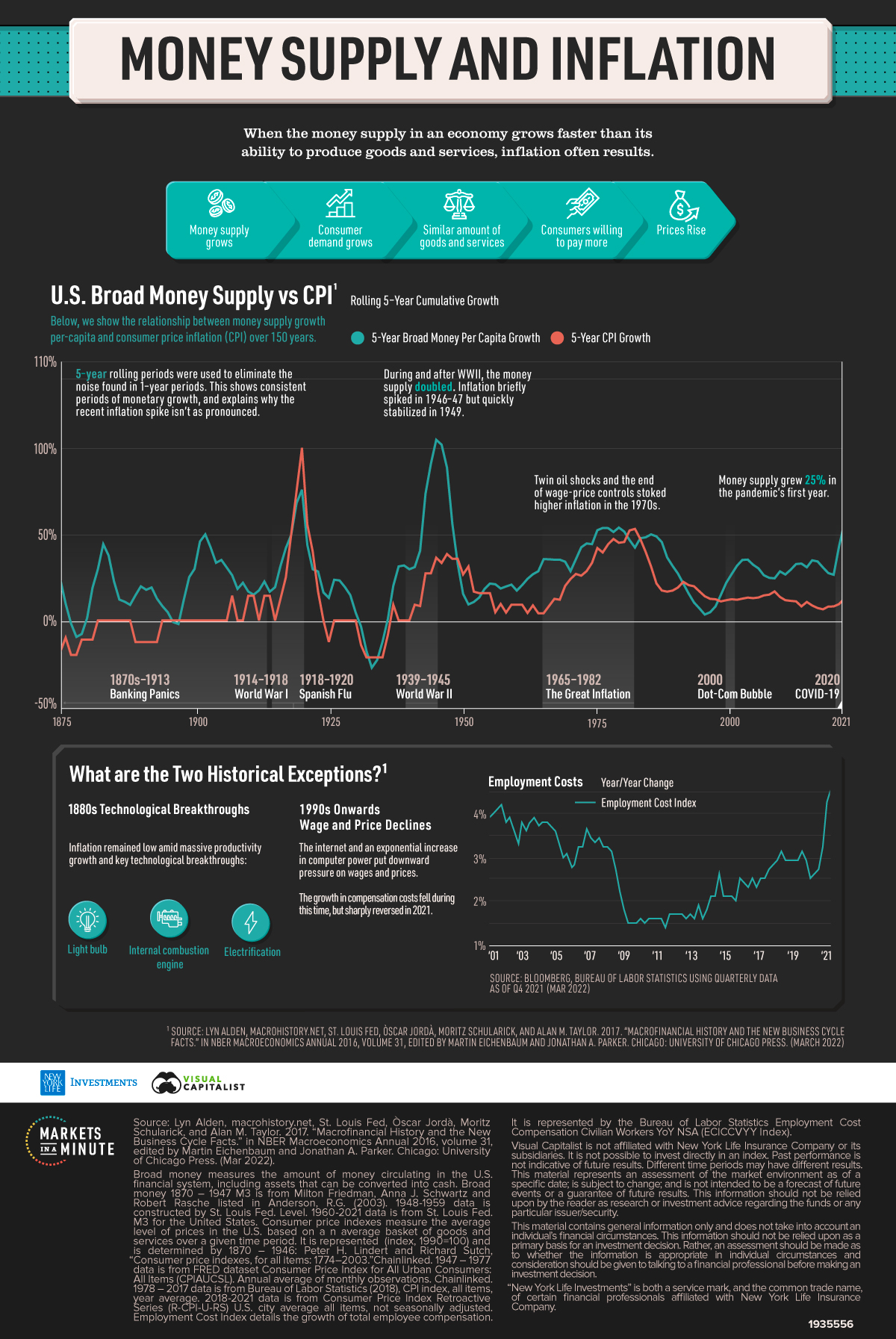
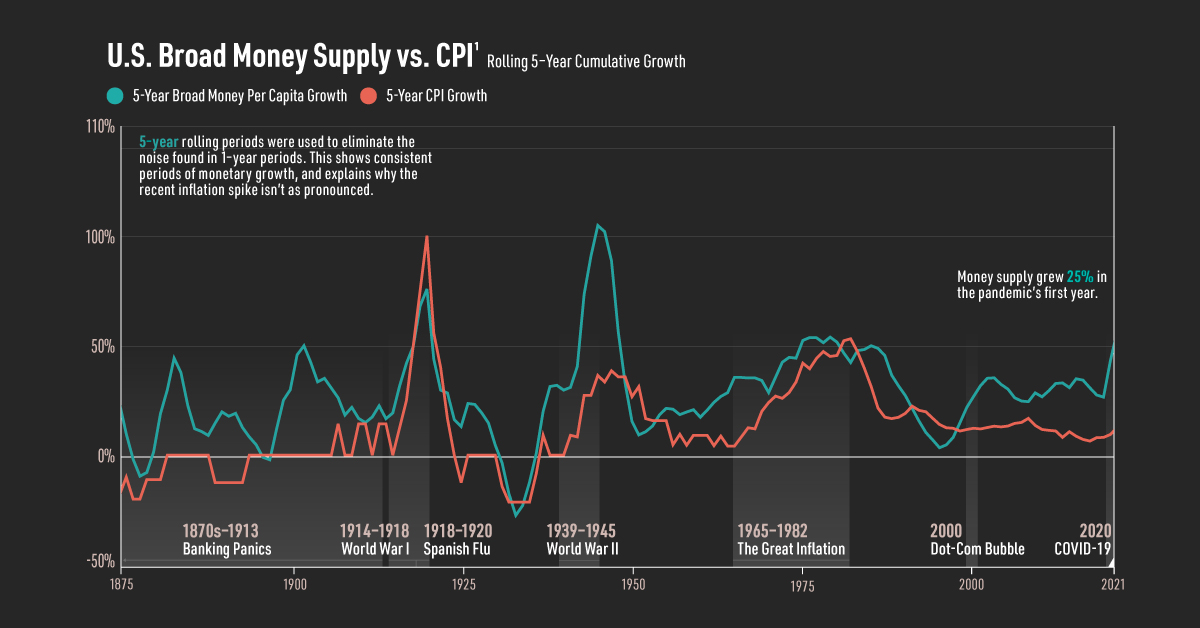

 Infographics2 years ago
Infographics2 years ago
 Markets in a Minute2 years ago
Markets in a Minute2 years ago
 Markets in a Minute2 years ago
Markets in a Minute2 years ago
 Infographics2 years ago
Infographics2 years ago
 Markets in a Minute1 year ago
Markets in a Minute1 year ago
 Markets in a Minute2 years ago
Markets in a Minute2 years ago
 Infographics1 year ago
Infographics1 year ago
 Markets in a Minute2 years ago
Markets in a Minute2 years ago





